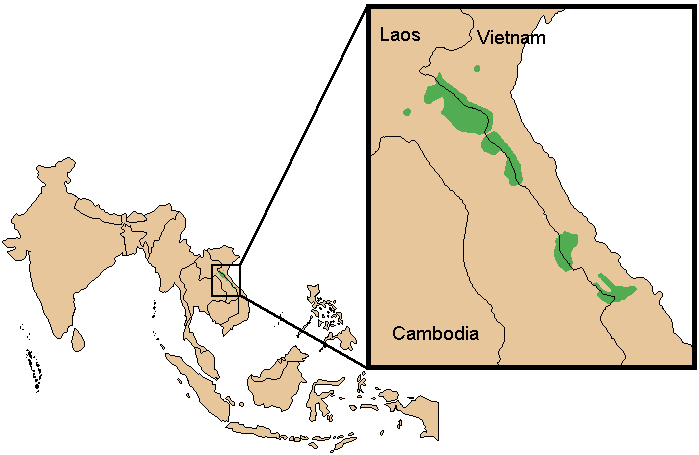Saola, the Asian unicorn, is one of the most mysterious and rare animals in the world. It was discovered in 1992 in Vietnam and is a new genus of bovidae, which includes cows, sheep, goats, and deer. Saola has two sharp parallel horns that can reach 50 cm in length and are owned by both males and females. It is also known for its striking white marks on its face and large upper jaw glands on its snout.
Saola conservation is very worrying. Its population has decreased massively from year to year due to rampant poaching in Vietnam since 1994. In 2001, the saola population was estimated to be 70-700 in Laos and hundreds in Vietnam. Later, the estimate dropped to above 100 individuals, making it categorized as "endangered" on the International Union for Conservation of Nature (IUCN) red list.
The last saola caught on a trap camera was in 2013 at the Saola Nature Reserve in central Vietnam. Since then, locals have continued to report its presence in and around Pu Mat National Park in Vietnam and Bolikhamxay province, Laos.
Various search efforts have been carried out aimed at breeding programs. Public awareness has also been built and information searches have been carried out among the public. As many as 300 trap cameras were installed around the Khoun Xe Nongma protected forest in Laos. However, until now there has been no result.
According to IUCN, only about 30% of Saola's potential habitat has been observed and only 2% have been intensively explored areas. Trap camera technology is said to be insufficient to detect the animal.
Large capital is needed to expand the scale of saola search. "It is clear that search efforts must be increased significantly from scale and intensity if we want to save this species from extinction," said IUCN Species Survival Committee director Nerissa Chao, quoted by The Guardian.

In addition, an organization called Saola Foundation is also raising funds for a dog training program that can detect signs of saola presence, such as feces. If the laboratory test results are positive, a team of wildlife experts will go down to the forest looking for saola. If successful, the captured saola will be taken to a breeding center.



















